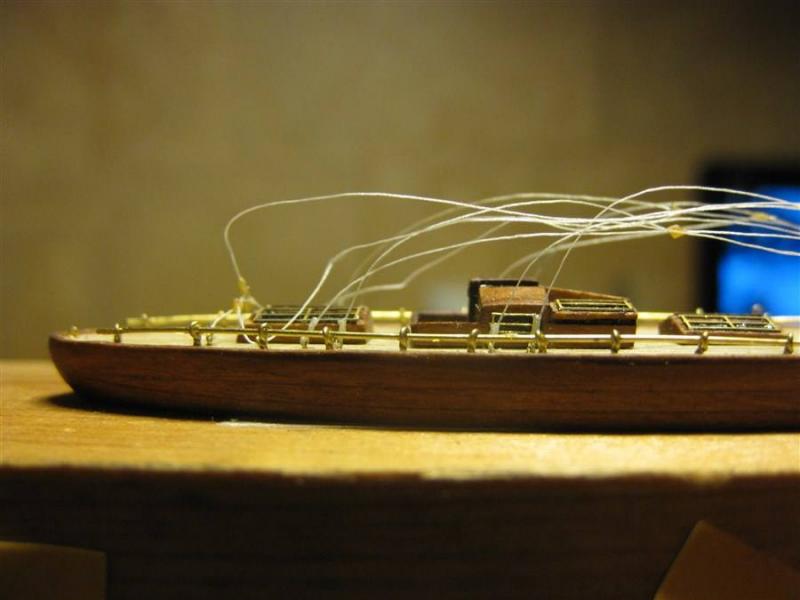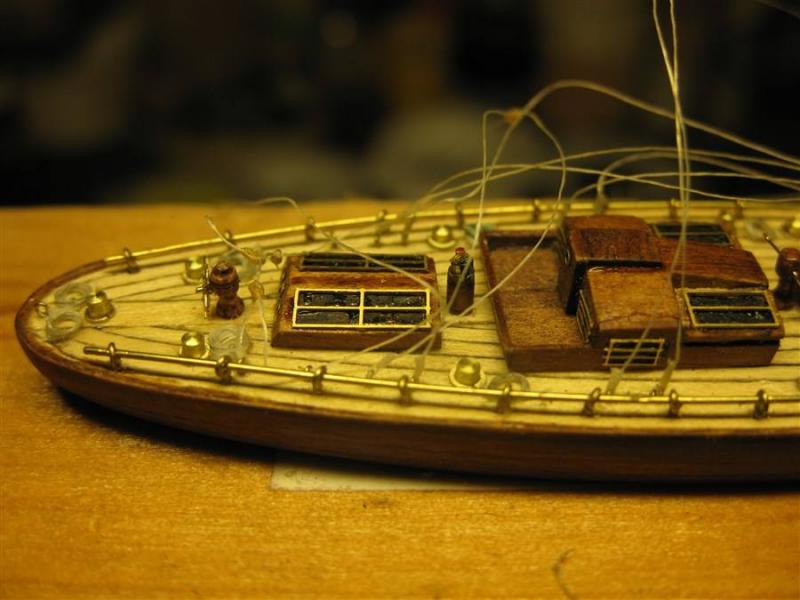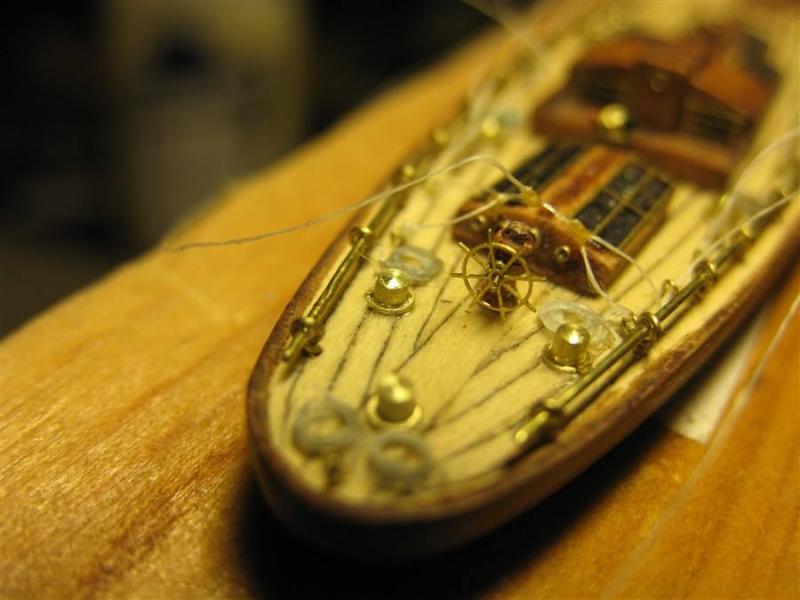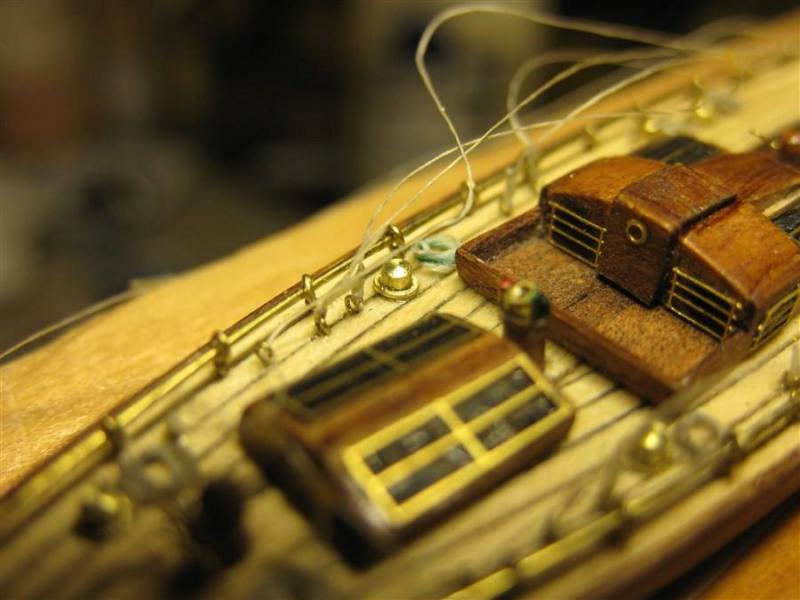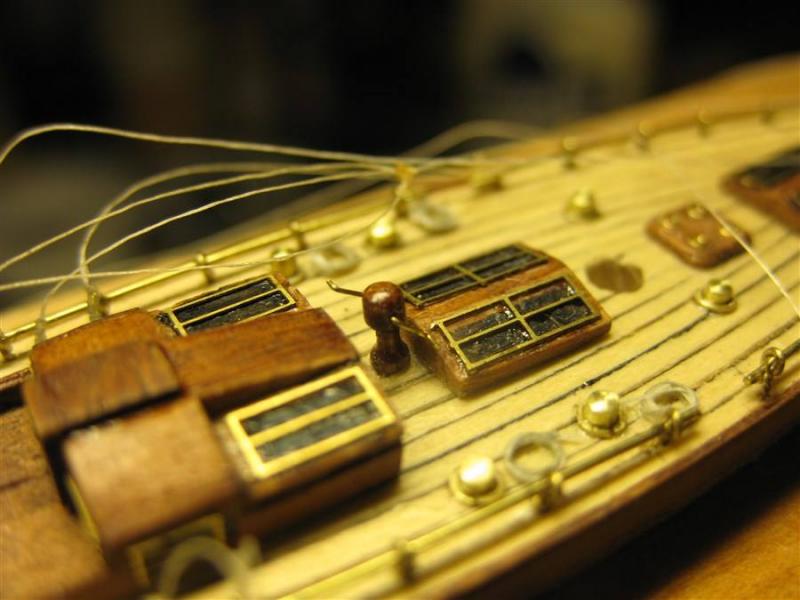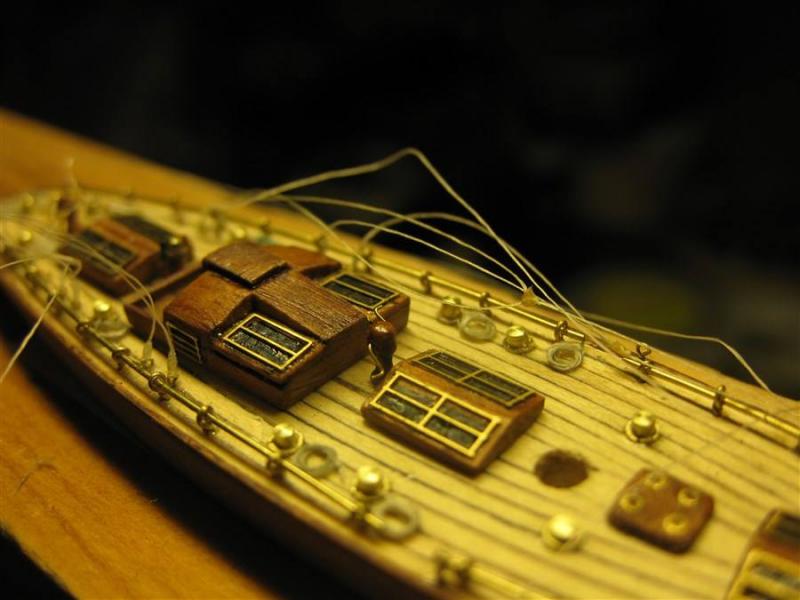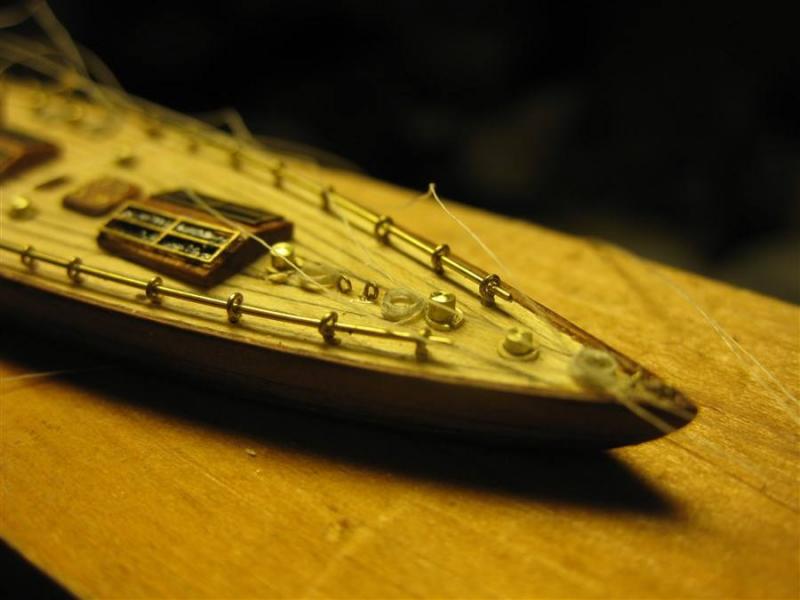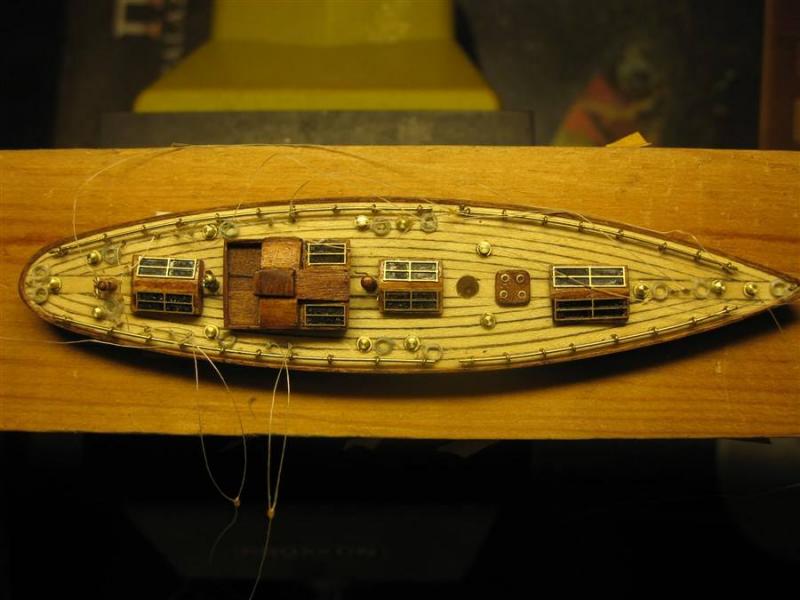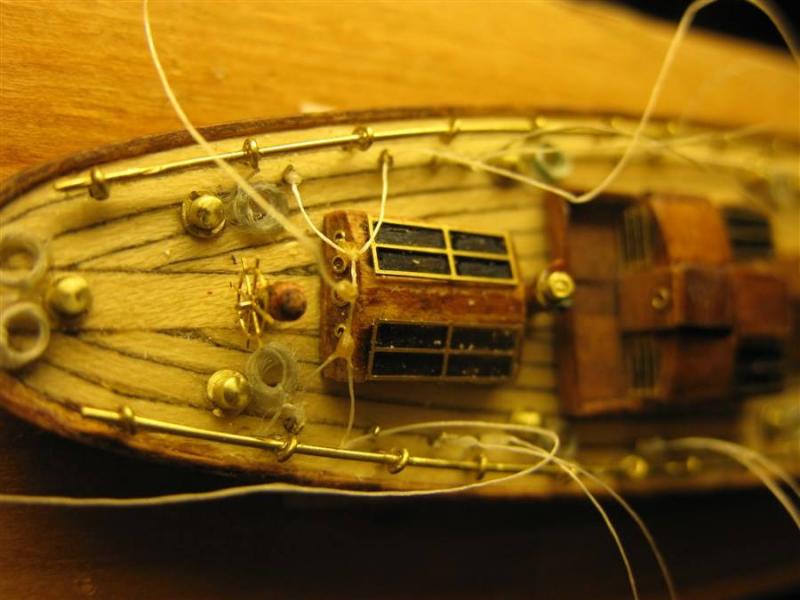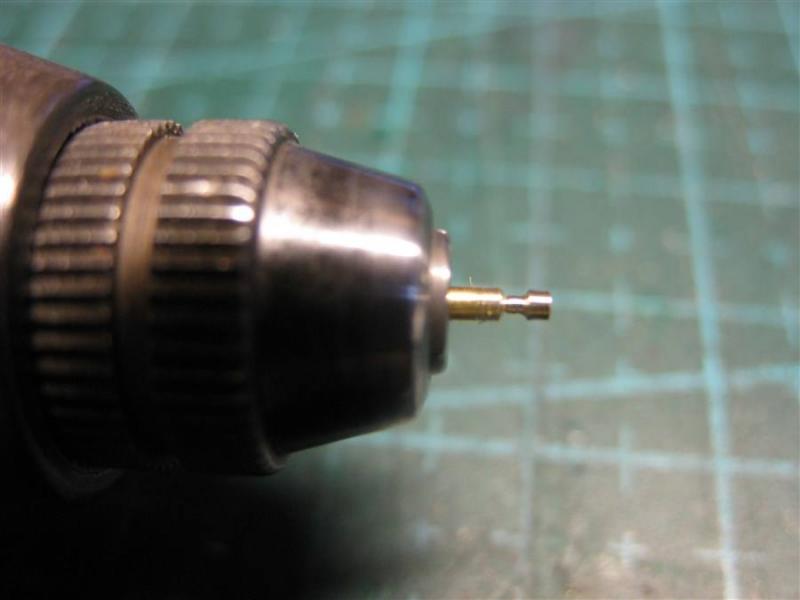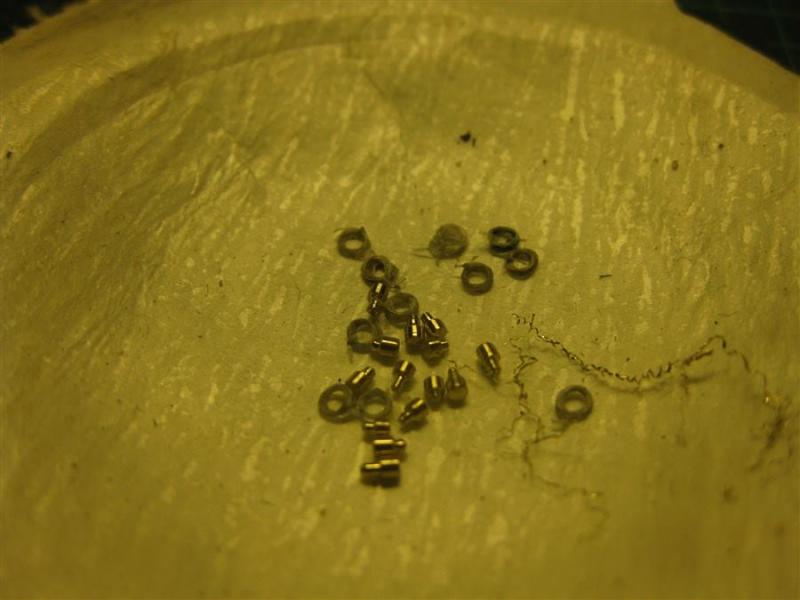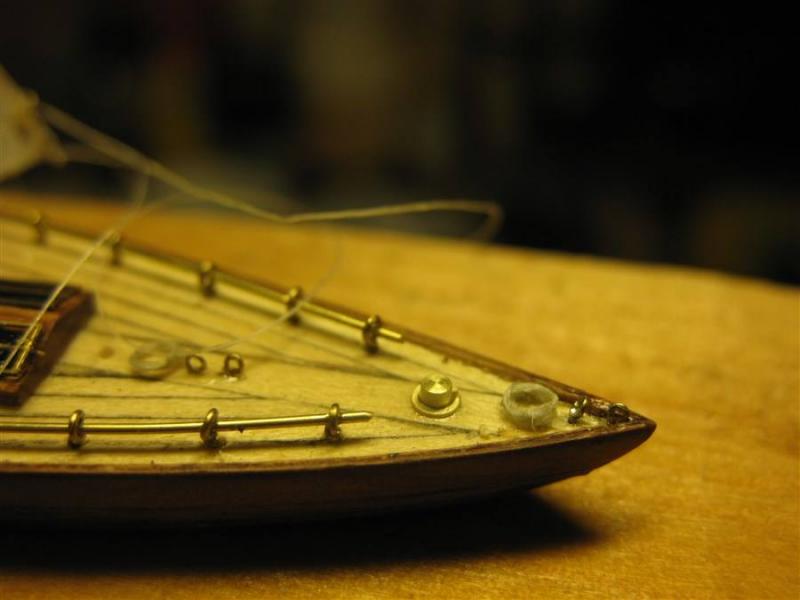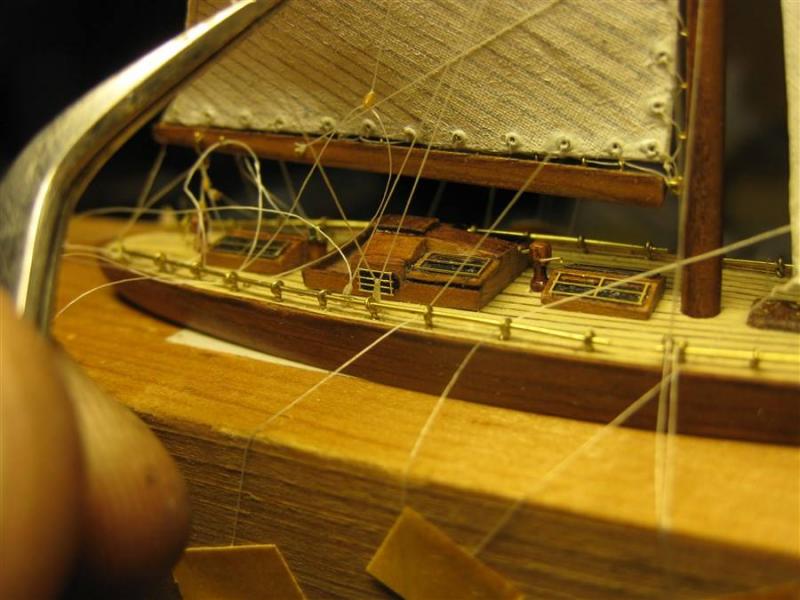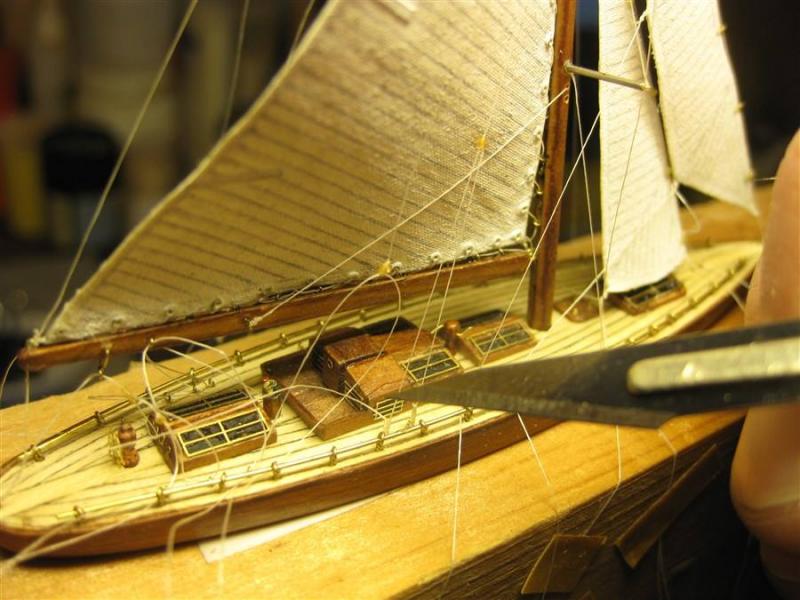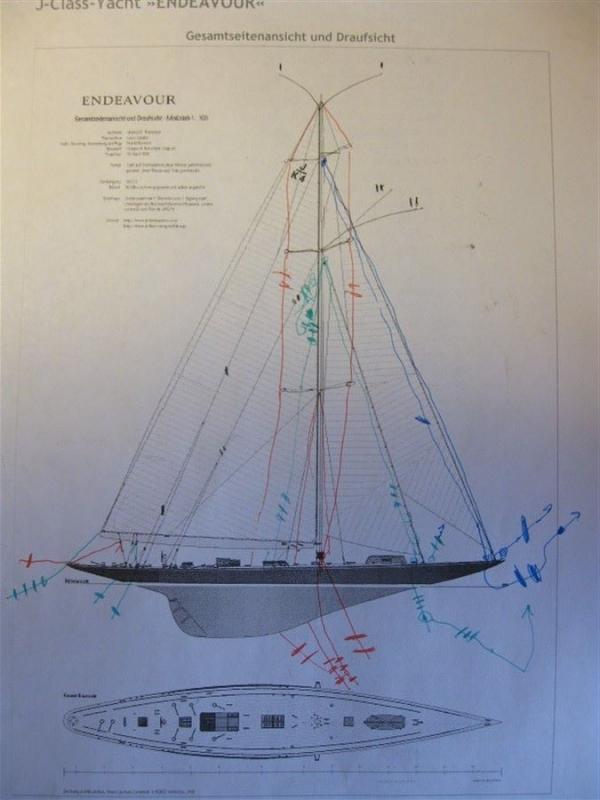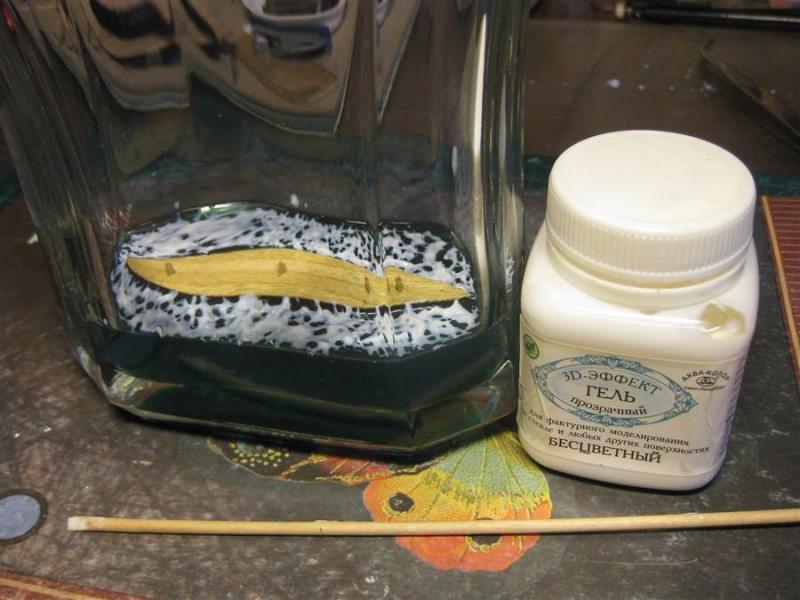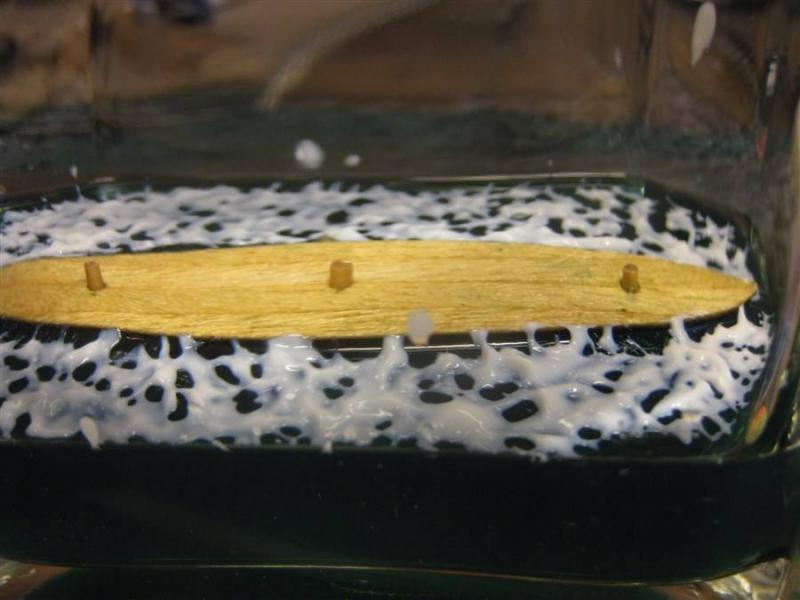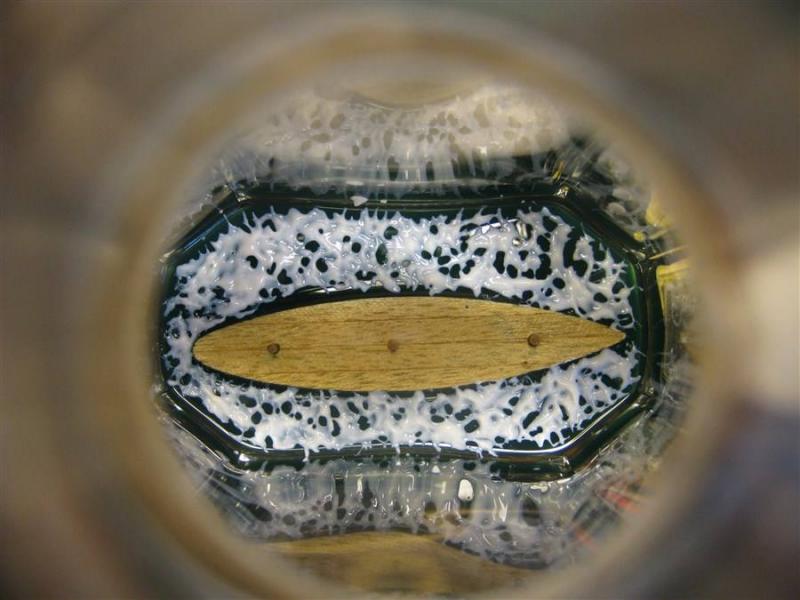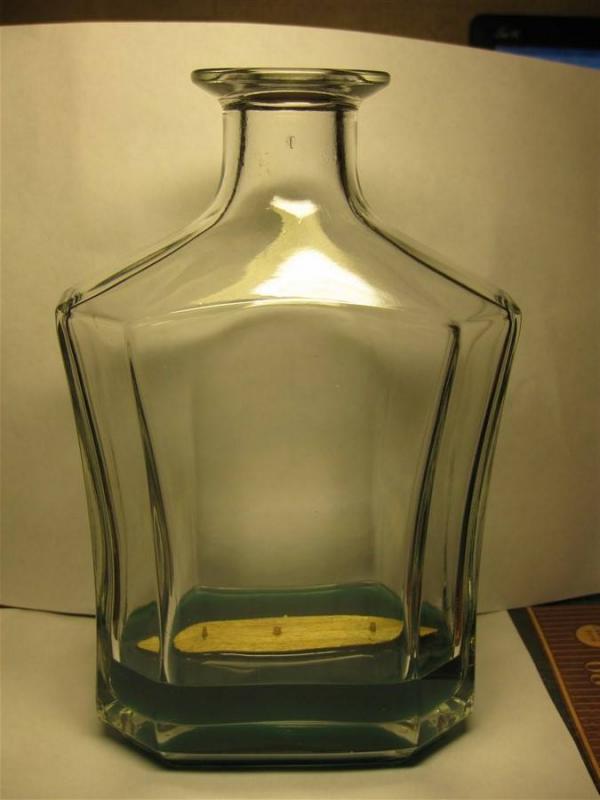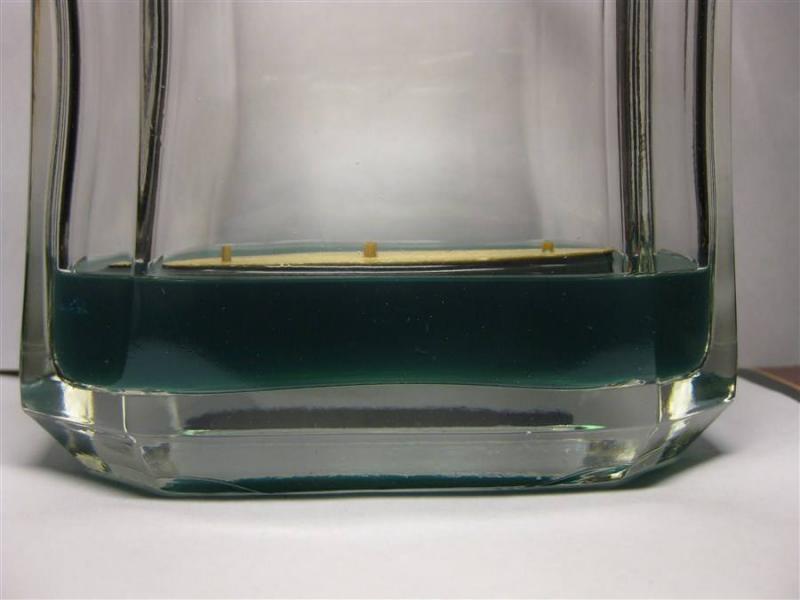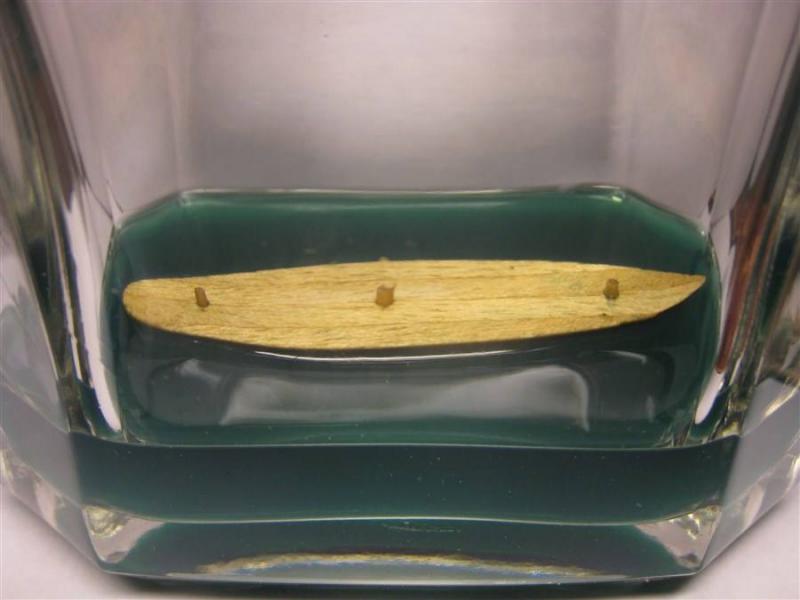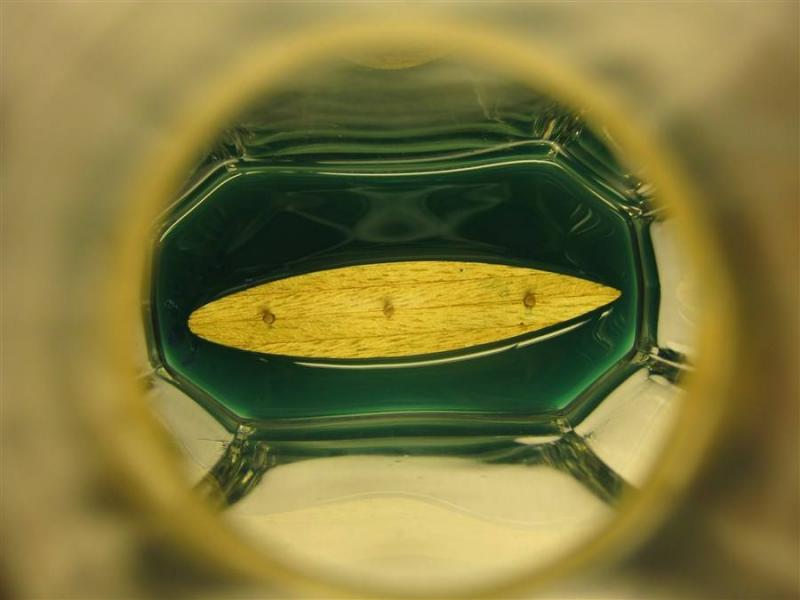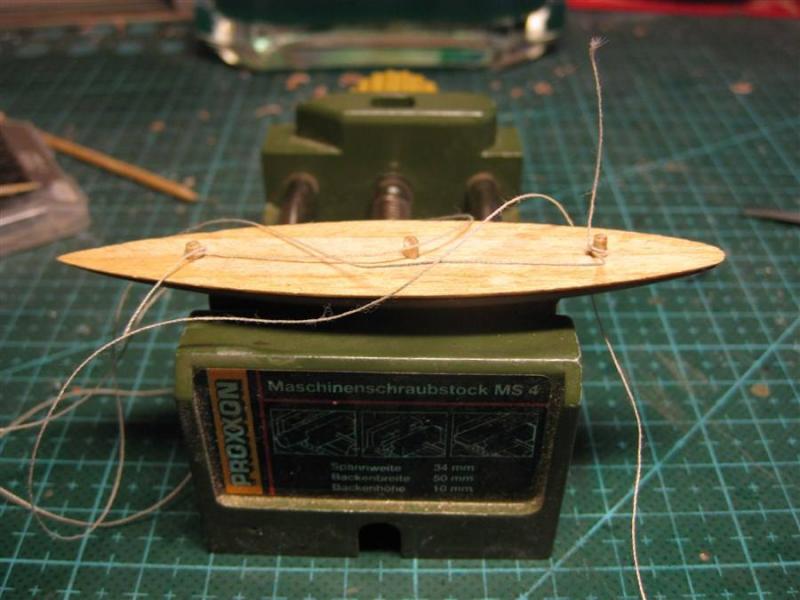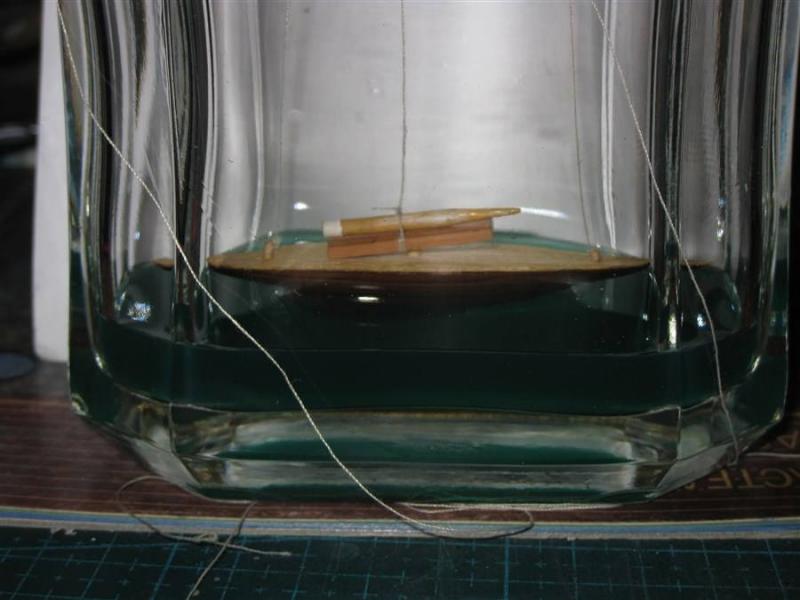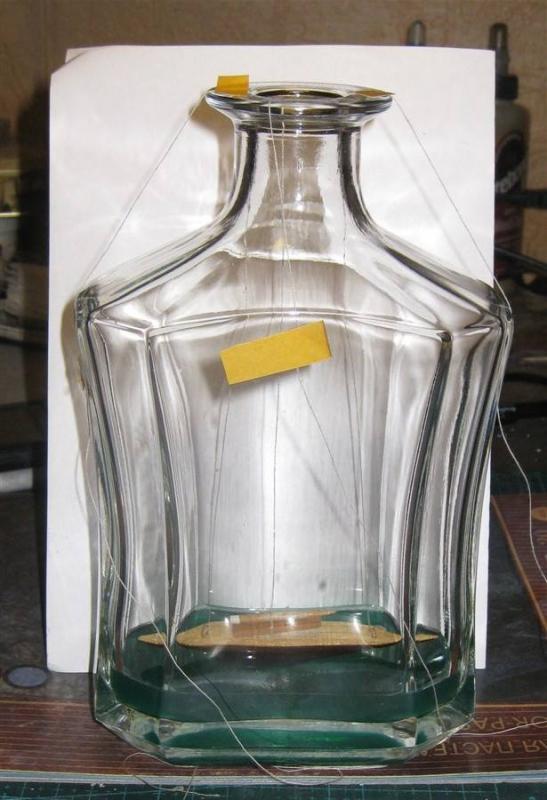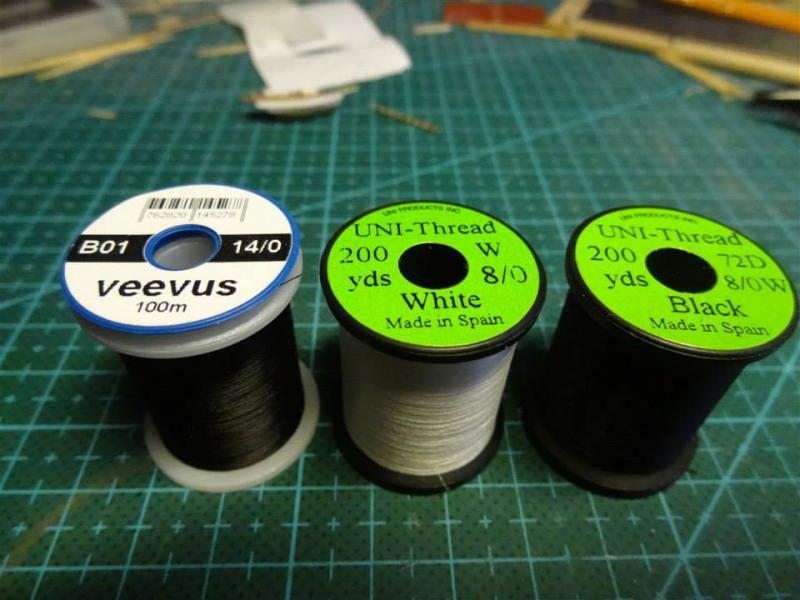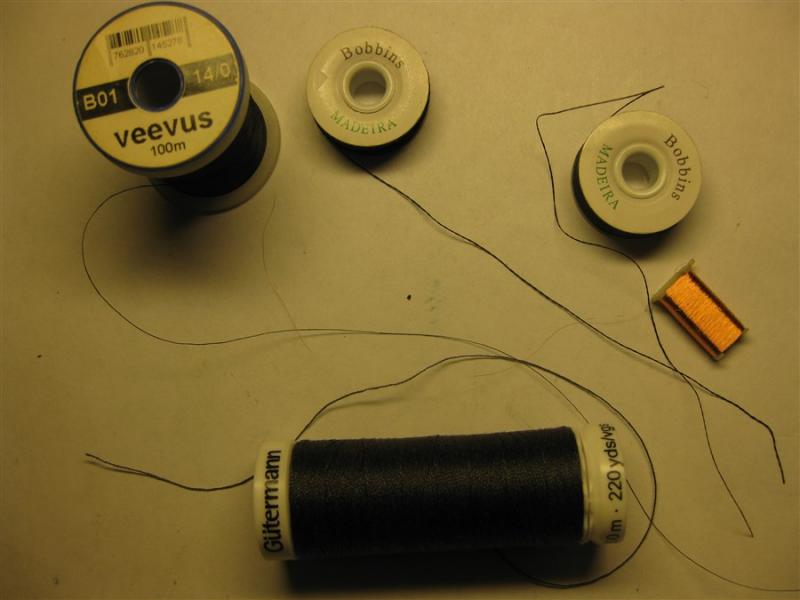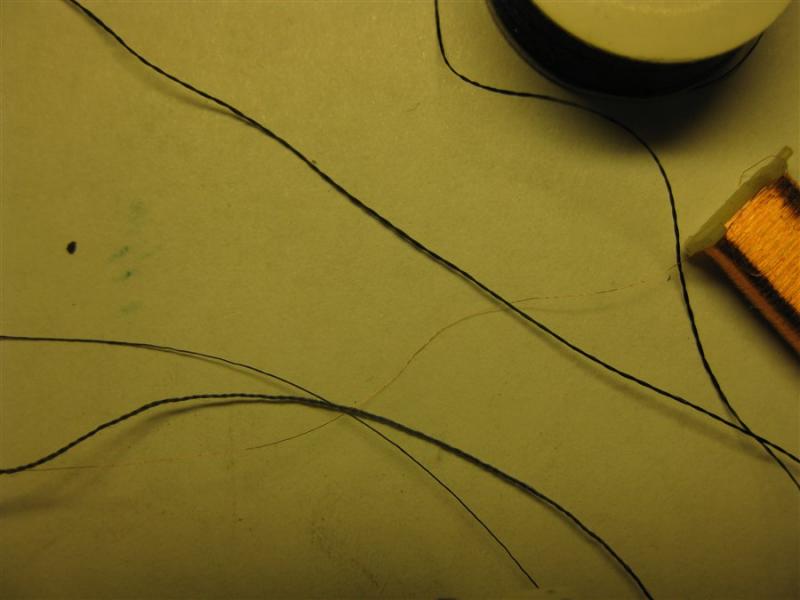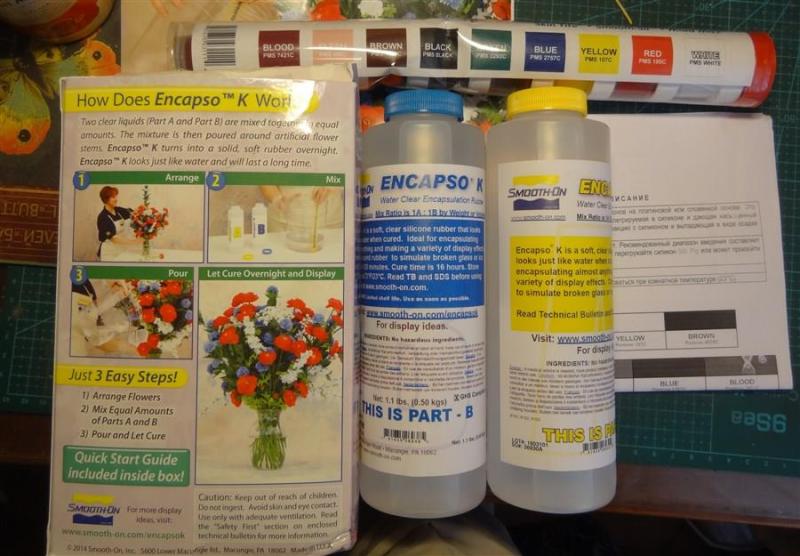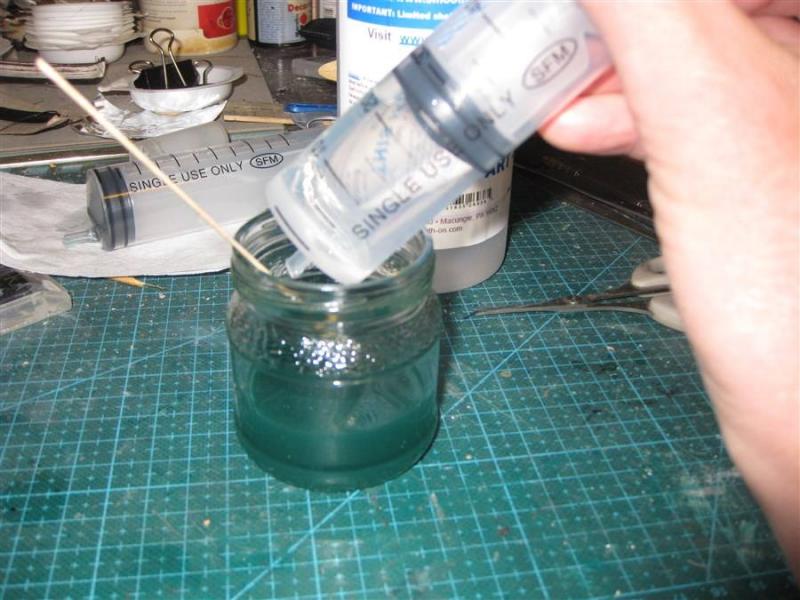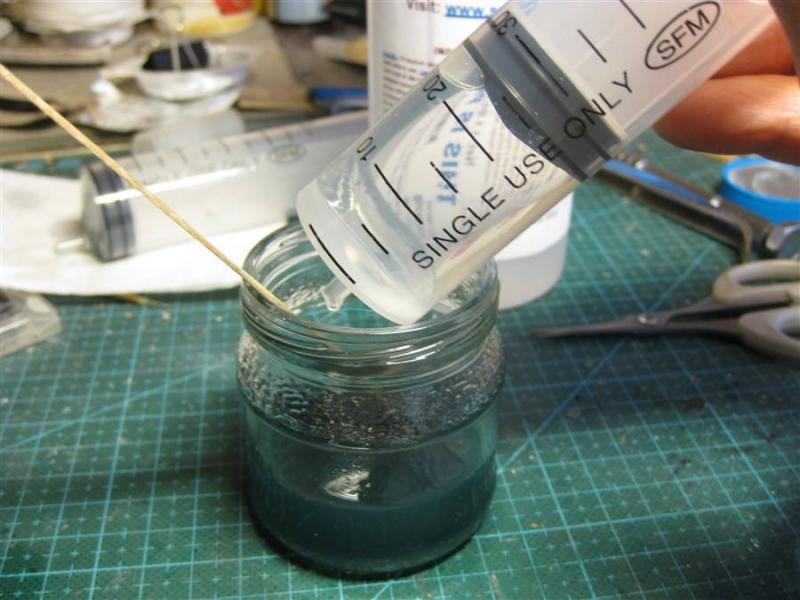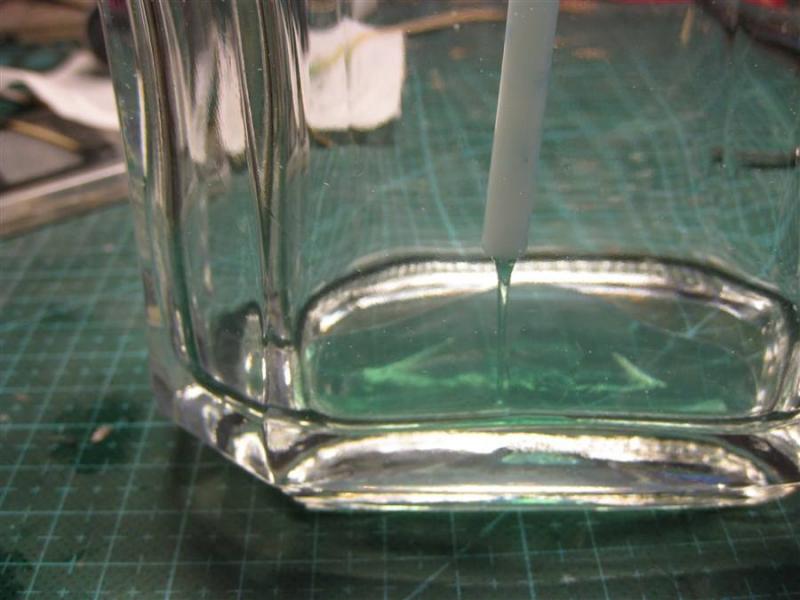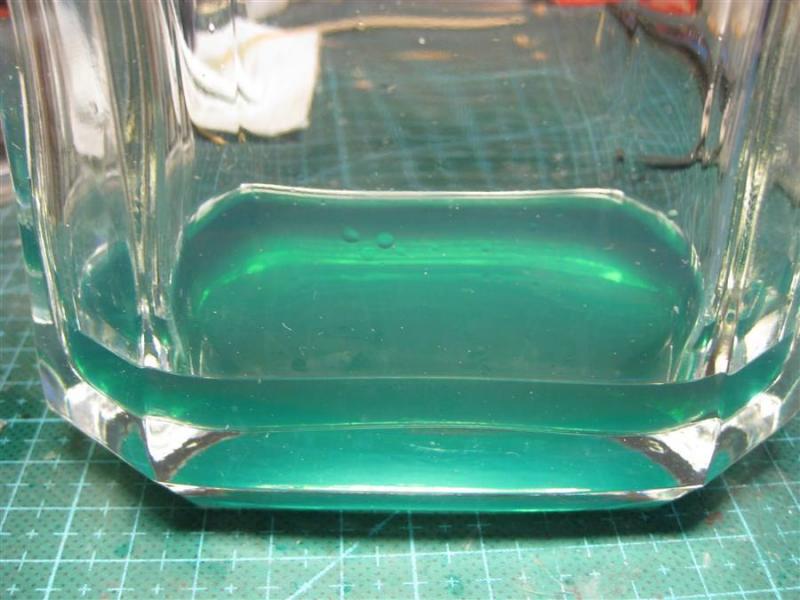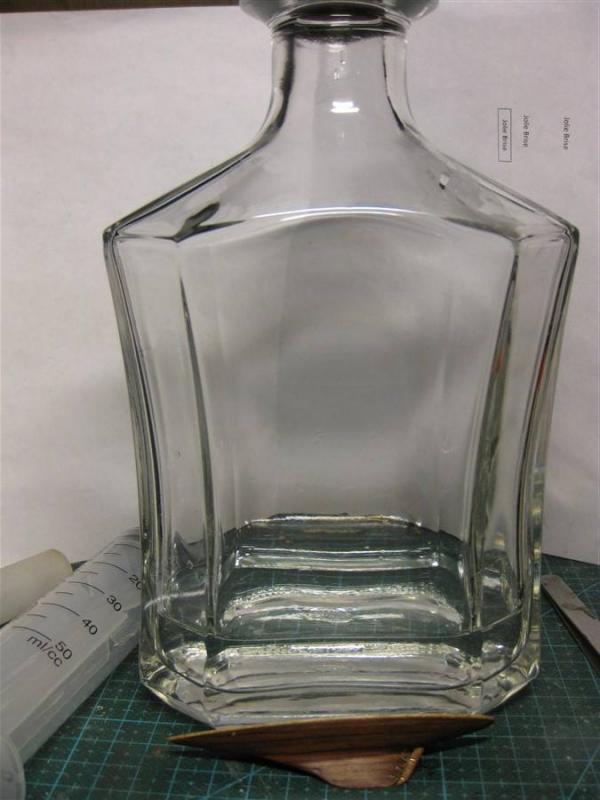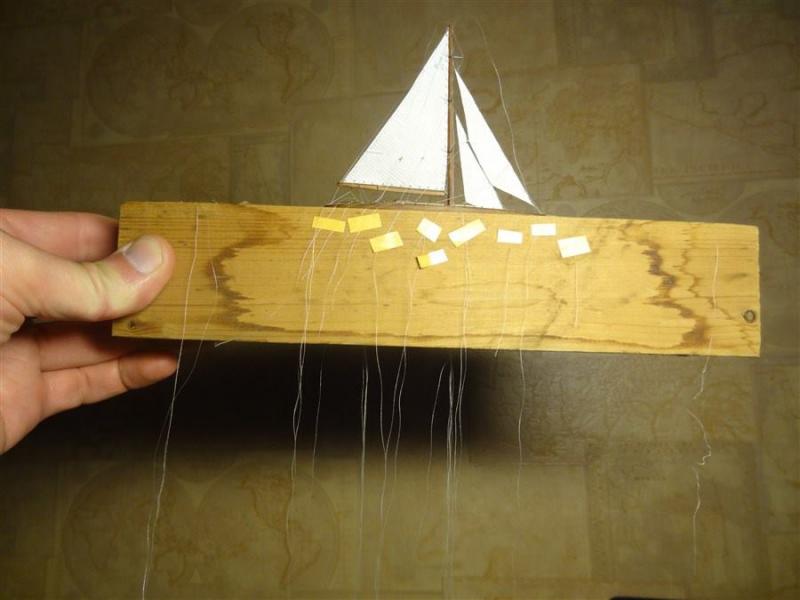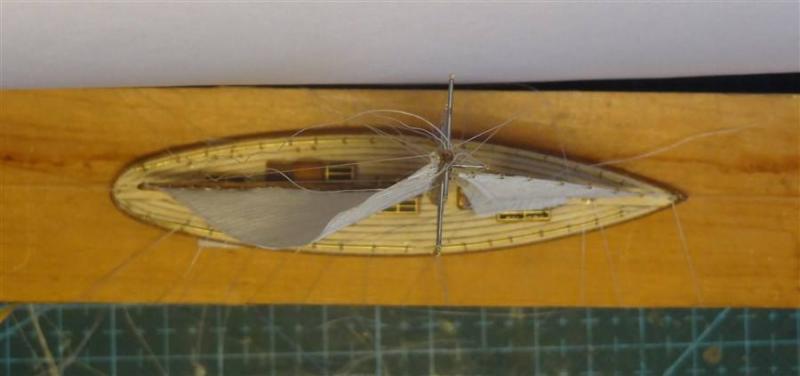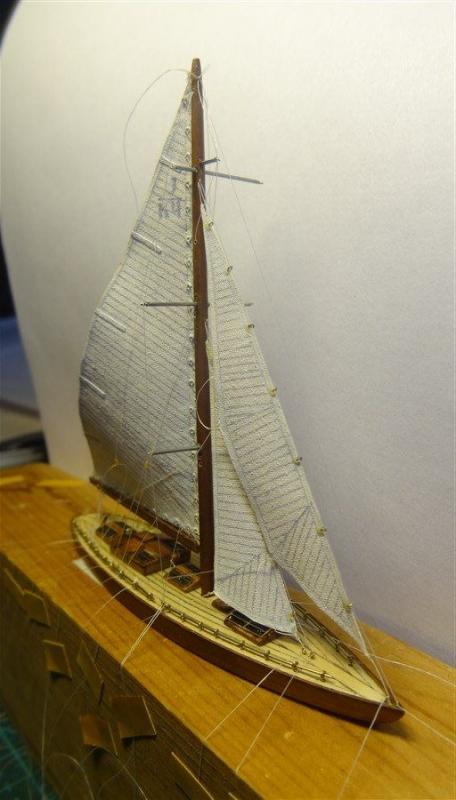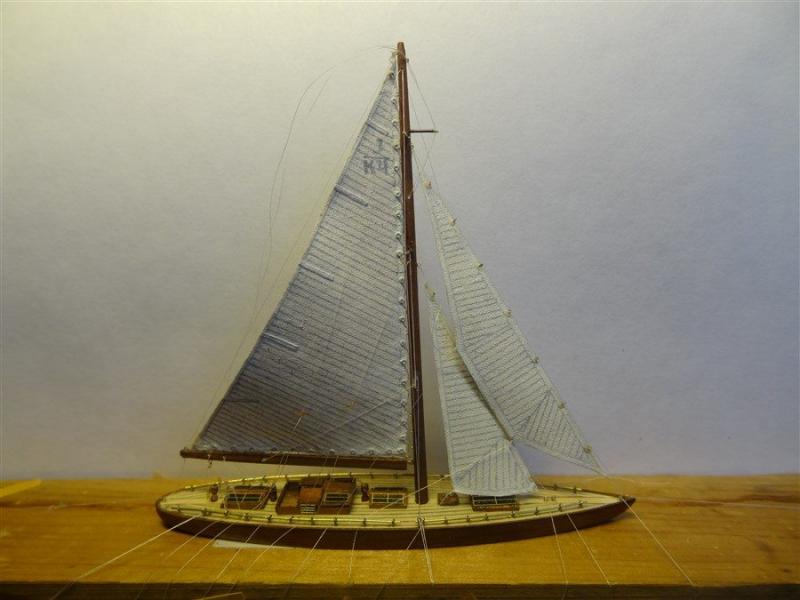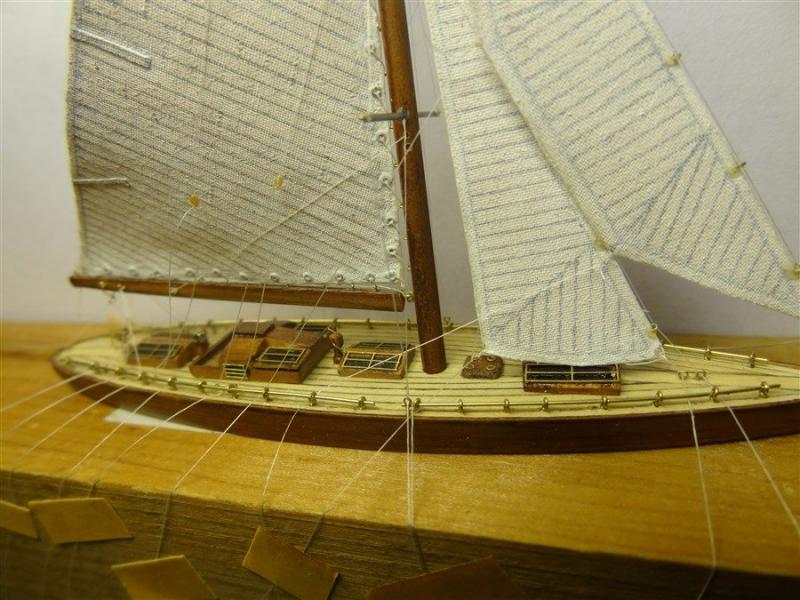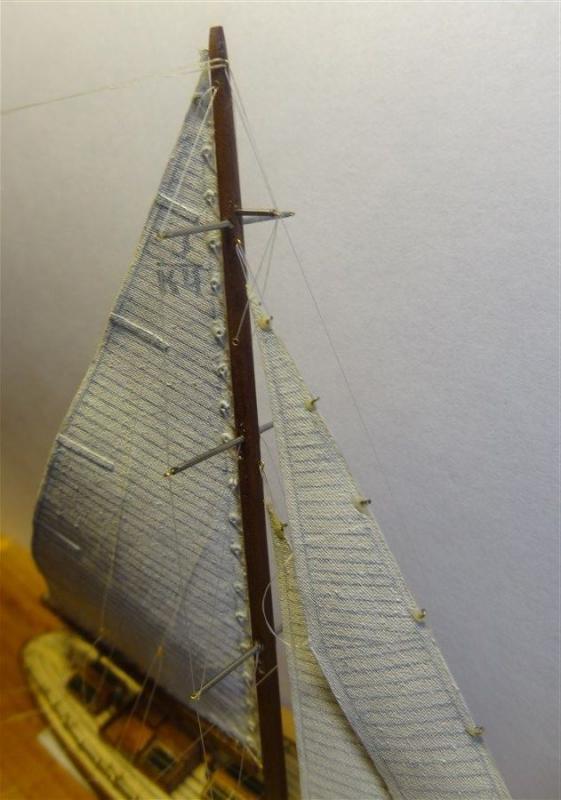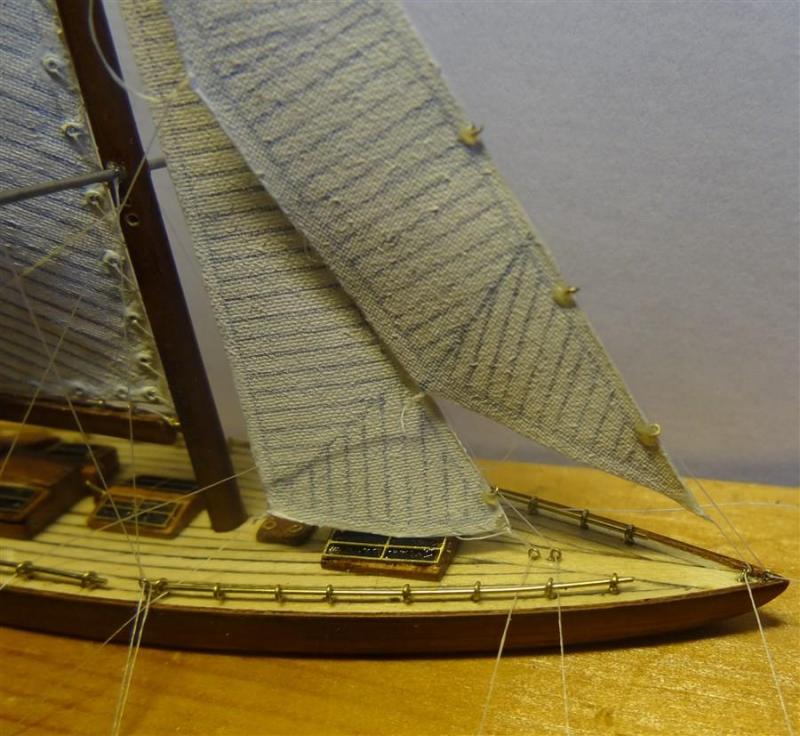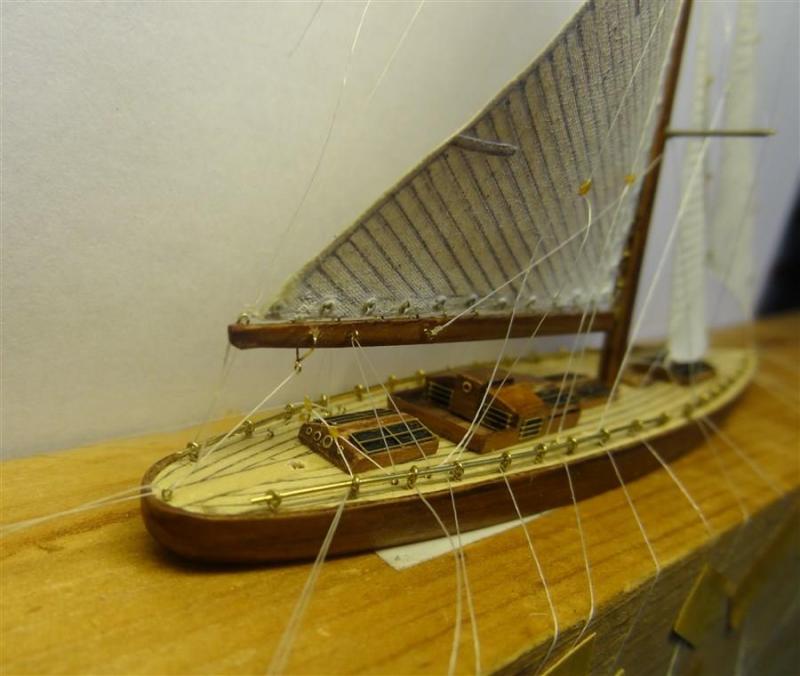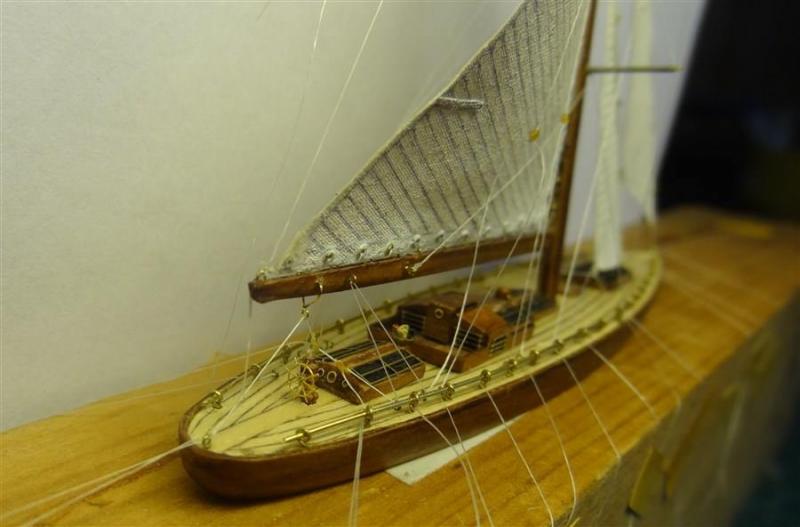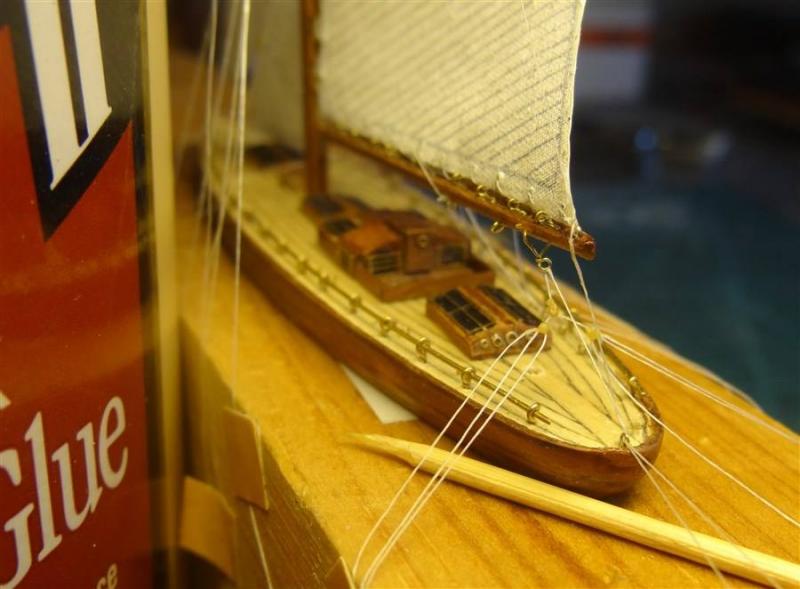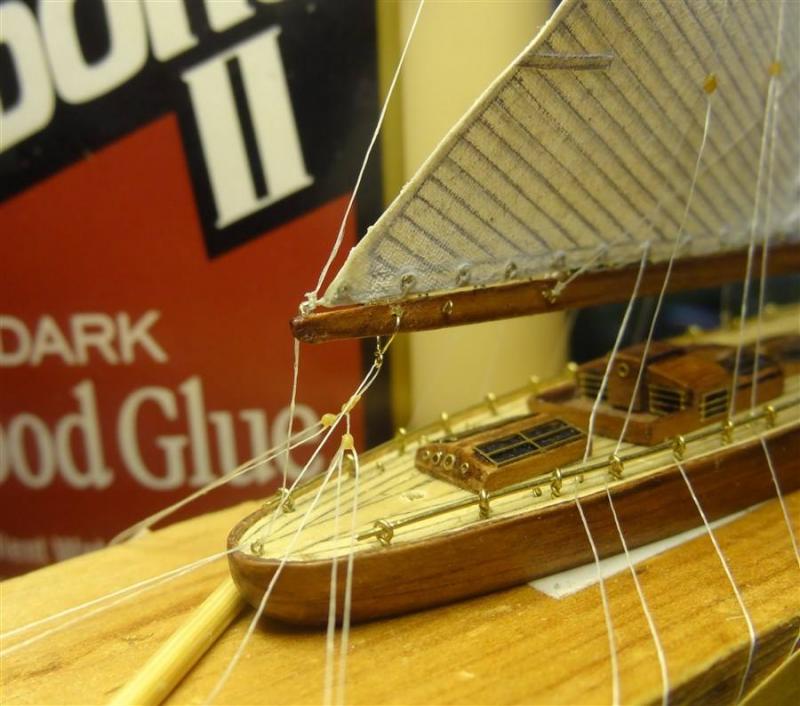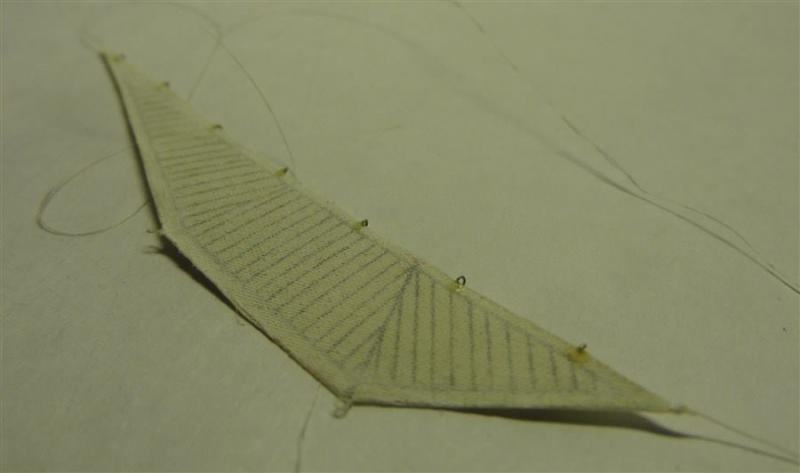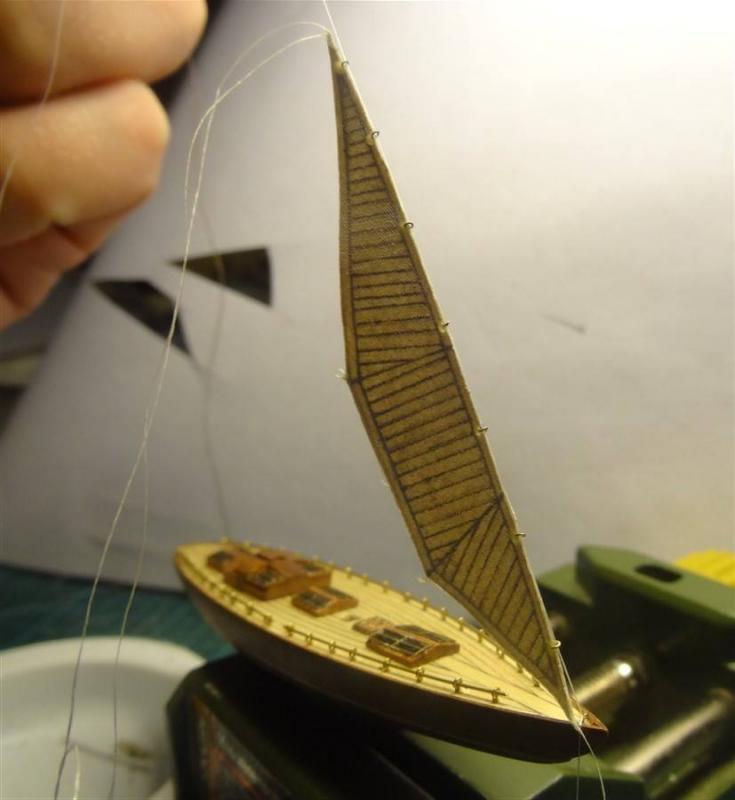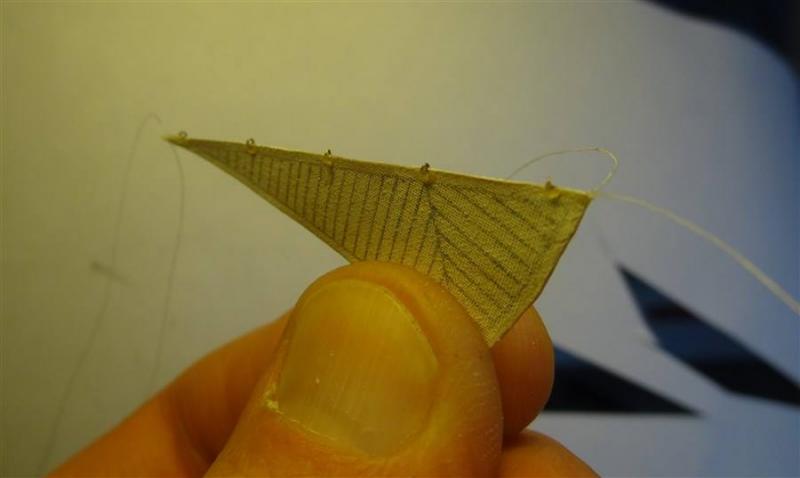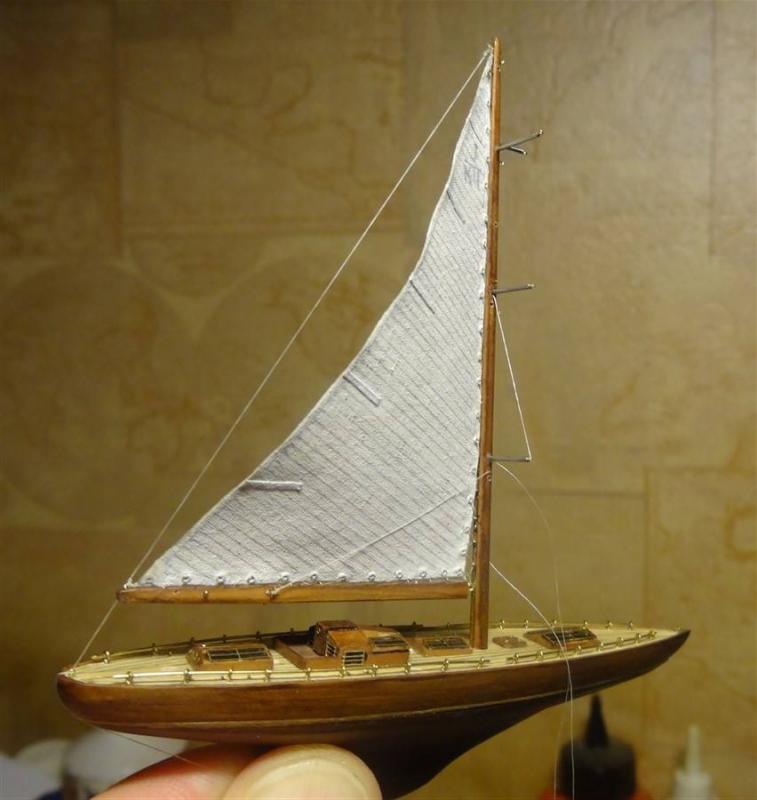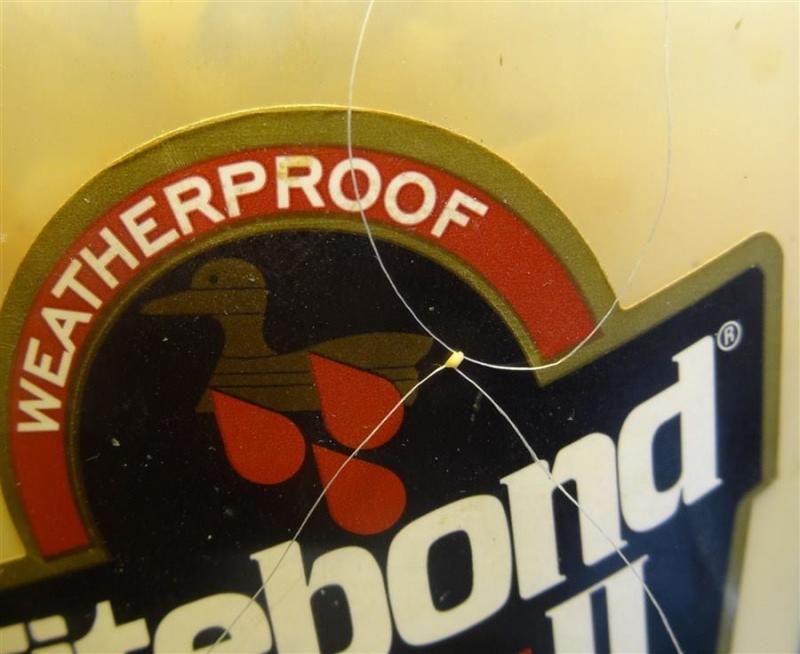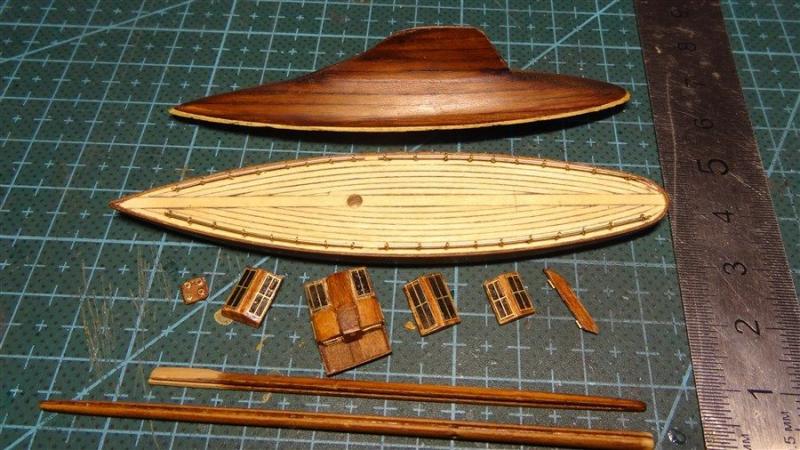
IgorSky
Members-
Posts
1,841 -
Joined
-
Last visited
Content Type
Profiles
Forums
Gallery
Events
Everything posted by IgorSky
-
Then I installed and secured the steering wheel, binnacle and the winch. And several views of the deck before placing the upper part of the body into the bottle .
-
Then I remembered that I still wanted to place several winches on the deck and to put at the deck several the small winding running rigging. So I had to quickly to make the winches. I used to do that a thin rod of brass, drill and needle files purchased during vacation. Yes, a good tool ... it's just a song! The base of the winches - rings of brass wire, ground off on both sides with sandpaper.
-
Thus, the gel was applied and, while the "wave" was drying, I proceed to the finalization of the process preparation of rigging to accommodation the top part of the hull into bottle. Firstly, it is necessary to fix those ends of the cut and the rigging which should be originally fixed on the deck. Secondly, I need to separated all parts of the rigging, at the same time making drawing assembly scheme and to mark these yarns in accordance with this scheme.
-
After waiting during another day, I realized that I did not receive the required level of transparency . That is, if I look at the top or bottom, the result is not bad, but when viewed from the side, the hull has been not seen through the "sea" as much as I needed. You may need to do the color is much less intense and do not use more pigments. In parallel, I quickly made another small project, for which I used this material. But has been used quite a small amount of silicone and "sea" was more transparent. T .e. was identified the need to continue to experiment with this silicone. Well, while I continued to work with the "sea". The next step - an imitation of the waves with the help of clear acrylic gel.
-
Hi Carl! As a result, this decision was not quite perfect... , but I'll tell you about it later .
-
About a day later, I started to fill the second layer of silicone. I mixed the remaining 40% of the colored component A with an equal amount of the component B and the resulting mix I filled into the bottle. The surface of the "sea" was almost flush with the line cut of the hull along which is going the waterline.
-
Hi Bob! WOW! Great job! My congratulations to you! Best Regards! Igor.
- 348 replies
-
- pequot
- cable ship
-
(and 1 more)
Tagged with:
-
Thank you, Bob! So, I continue the story. According to the instructions this mix dries during 24 hours while respecting the proportions of components and the ambient temperature. Therefore, without special hurry, I have prepared the lower part of the hull to place in the bottle. I hung it on two threads, plunging the keel to the required depth. Still on the same thread, I just go down a small weight to finally align the hull. Thereafter, the bottle was removed from the desktop into the cabinet, not to accidentally push her.
-
Yes, Jeff, the wire can be very, very thin compared with the thread. But it seems to me, the use of different diameteres of the wire or threads for the making of the stays and ratlines gives a good visual effect.
-
This time I had to, finally, to try out the new material for the making of the "sea". In one of my current project it is very important for me to get a clear sea. At the same time the sea must be filled in layers and is highly desirable that this "layered" was not noticeable. To this end, it was purchased the kit of two-component silicone Encapco K and the set of pigments for him. Portions of this silicone need mixed in equal proportions. For coloring necessary to add pigment to component A. Components are quite liquid, as compared with an epoxy resin. So I added a little bit of blue, green and yellow pigment in a measured amount of component A, mixed thoroughly and got the desired color. Further I separated 60% colored component and mixed with the same amount of component B. The resulting composition I mixed well and filled into the bottle with a syringe with a long nozzle.
-
Many thanks, Daniel, for your words of support! After returning from vacation, I proceeded directly to the manufacturing phase of the sea and move the model into the bottle. Bottle has been selected and prepared a long time ago. And the first thing I did was the exactly define volume of the future "sea".
-
Hi Jeff! Tiny work! Perhaps you could use a more subtle threads for ratlines on rigging. Best Regards! Igor.
-
Hi Patrick! WOW! You are starting the new project! Patrick, please, reserve the chair for me in the front row! Best REgards! Igor.
-
Oh, Bob , I sometimes think that the smaller the scale, the easier it is to work, because my mistakes on a small scale are less visible Julie, perhaps this is true, but I cannot photograph them Ha-ha, Carl! Do you think that I can without fear and confusion to look at it? Piet, good luck to you in your future build! Best Regards! Igor.
-
The idea of posting rigging boom was born suddenly for me. Feature of "bottle" modeling is that it should be possible disassembly and rigging before placing the model in a bottle and reassemble all we have made before inside the bottle. In this project, I am going to put into bottle the hull of the model piece by piece, and then later install the mast and pull the rigging.
-
Then I continued to work with the front sails. Some time ago I cut a lot of rings of thin wire. I used some of them to simulate the eyelets, and the rest I decided to use for the simulation of small rings, which sails are attached to the front of the forestay.
-
Now some updates in this project. Firstly, I finally fixed the mainsail and cut off any excess threads.
-
Many thanks Mike. Patrick, Mark, Harry and and all who are interested in this project! I really appreciate your comments and feedback! Now I will try to answer you and tell you about new updates. No, Mike, these blocks I make using glue. I tie the threads in knot and add a small drop of glue to the knot. Please, look at this photo: In this project, I do not use the loops, hinges or other similar tricks. I am going to put the mast into the bottle separately from the hull. There is a hole in the deck for the mast - Patrick, I'm trying to find a simple ways to solve many problems. Sometimes I do it , but sometimes not Oh, Mark, these blocks are very easy to do, but as a result they look pretty good, especially since very few people will be able to see them inside the bottle Oh, thank you my old frend Harry! I would like to clarify that this model can not be called as model of the Endeavour. The fact that in the beginning of this building I have changed ratio of the her hull. As I said, I made this hull at the end of 2014, but then I did not like this resultat. So I did not continue the construction in that time. Now I decided to finish it, to test the new material for the manufacture of the sea and some of my ideas. Yes, I use еруыу drawings of the yacht Endeavour to make of deckhouses, some elements and sail, but I can not call it as the yacht Endeavour Harry, can I look at the photos of your model of Endeavour?
About us
Modelshipworld - Advancing Ship Modeling through Research
SSL Secured
Your security is important for us so this Website is SSL-Secured
NRG Mailing Address
Nautical Research Guild
237 South Lincoln Street
Westmont IL, 60559-1917
Model Ship World ® and the MSW logo are Registered Trademarks, and belong to the Nautical Research Guild (United States Patent and Trademark Office: No. 6,929,264 & No. 6,929,274, registered Dec. 20, 2022)
Helpful Links
About the NRG
If you enjoy building ship models that are historically accurate as well as beautiful, then The Nautical Research Guild (NRG) is just right for you.
The Guild is a non-profit educational organization whose mission is to “Advance Ship Modeling Through Research”. We provide support to our members in their efforts to raise the quality of their model ships.
The Nautical Research Guild has published our world-renowned quarterly magazine, The Nautical Research Journal, since 1955. The pages of the Journal are full of articles by accomplished ship modelers who show you how they create those exquisite details on their models, and by maritime historians who show you the correct details to build. The Journal is available in both print and digital editions. Go to the NRG web site (www.thenrg.org) to download a complimentary digital copy of the Journal. The NRG also publishes plan sets, books and compilations of back issues of the Journal and the former Ships in Scale and Model Ship Builder magazines.

